SEARCH






|
|
|
|


By Editor Marius Cinteză
Published the 23rd of July 2021
“These are simple things that drive me: sunsets and sunrises, a walk in the mountains, sounds of a waterfall and birdsong in the trees. I just feel happy and in harmony with nature. And even more happy when I am able to share the beauty of our world with others and inspire them to travel and feel this happiness too.”
- Daniel Kordan
Formerly a mountain guide and always an explorer at heart, Daniel Kordan is a Russian photographer passionate about landscape photography. He is of the opinion that photography main power is to inspire and connect people and he strengthened the relationship with photography by experimenting with guided photo tours 7 years ago, which eventually led him to his current full-time work: photography tours and personal expeditions mainly in Polar regions, but also in remote locations of Kamchatka, Patagonia, Chile and Bolivia. Daniel’s breathtakingly beautiful works are hosted by famous magazines worldwide (e.g. Digital SLR Magazine, UK, Photography week, Photography Master Class, National Geographic, Discovery) and his impressive activity was awarded multiple times (e.g. Golden Turtle Nature nomination winner, National Geographic Russia contest winner, Best of Russia ’13, ’14, ’15 ‘16 winner, best photographer, Trierenberg Super Circuit award - best landscape photographer 16’ 17’).
Please join me in discovering more about Daniel’s works and personality in the interview below!
First, I would like to thank you so much for taking your time to answer my questions! To begin, please introduce yourself and tell us about you, your hobbies or other jobs/projects you are involved in!
I have been fascinated by the possibilities of photography since my early childhood. I grew up in a beautiful lake region under Moscow exploring wild nature, spending most of my free time in nature. I graduated from art painting school when I was a kid. Mix art, nature, constant activities and you will receive a summary – art of Landscape photography. Life started swirling me, pushing me into the rush. University, hard work on my quantum physics thesis, family and friends… But there is always a pleasure in the pathless woods: places I always returned and always admired. Nature is my inspiration, with all the beauty and variety of colours and compositions. Lucky for me, during my study at the Institute of Physics and Technology I gained experience not only in physics, but also in mountain climbing and hiking, guiding tourist groups in winter and in summer participating in the life of the University mountain club. I became a guide of photo-workshops and chief editor of “Continent expedition” magazine. We wrote awesome articles on travel and adventures all over the world competing even with National Geographic.
I live in the world today, but there are places on Earth I am attached to by my soul. I love Lofoten islands in winter, with their remarkable atmosphere of fishing villages, sailing adventures, incredible hikes and northern lights dances during the wintertime. Spring and autumn are the times to visit Tuscany. Rolling hills and steep alleys of fortified medieval towns, golden mists in the morning over Val d’Orcia and Florentine architectural marvels, silvery olive gardens and distinctive local cuisine – Tuscany never left me for 6 years of my guiding there. I love remote locations: Kamchatka, Patagonia, Greenland, Chile and Bolivia... The world can’t live without testimonials, so I should place a few words here on awards and publications. I have several awards in photography: Golden Turtle Nature nomination winner, National Geographic Russia contest winner, Best of Russia ’13, ’14, ’15 ‘16 winner, best photographer, Trierenberg Super Circuit award (best landscape photographer) 16’ 17’. I have publications in such magazines as Digital SLR Magazine, UK, Photography week, Photography Master Class, National Geographic, Discovery, Photoworld China, Digital Photo (Bauer Media) magazines. My key clients are Apple, Gazprom Neft’, S7 Airlines and RedBull. I am spending most of the time in Norway at Lofoten islands and in Tuscany at our villa Gaia, guiding groups from Europe, UK, US, Asia and Russia. I am an official Nikon, Gitzo and Lucroit ambassador. Currently, I am working under my photography tours and personal expeditions mainly in Polar regions. I am a partner in Iceland photo tours company, we built tours in 45 countries around the world. I am teaching thousands of students with my online courses as well. I live in a quiet village close to Moscow with my family: 2 daughters and a wife.
Let’s start from the beginning: when and how did you start your photographic journey?
I was born in a small town about 120 km from Moscow. It´s a wonderful region with lakes, forests and unspoiled nature all around. For that reason, many of my most memorable experiences, have centred on nature. From mountain guiding in our University mountain club, my first years in photography were incredibly hard. I used to work as scientist and had lots of work beside my photographic hobby. I barely had any money to save for equipment or travel. I didn’t just do landscape photography. I was a chief editor in our printed magazine “Continent Expedition” which was forced to close. It was really hard to maintain a printed magazine as everyone went to social networks and our sales dropped significantly. We wrote about people and travel, challenging National Geographic. When I was short in funds for my travel, I took on all kinds of photography: wedding, portrait and production. It is hard to refuse this kind of photography. The result is short-term: you photograph – you get paid – everyone is happy. It’s not the same in landscape. When I started to guide photographic tours 7 years ago, it was just an experiment for me, which eventually led me to my current full-time work. The first groups were hard to get together, now lots of people travel with me, often multiple times.
For many of us photography is either a hobby or a way of life. How would you define your relationship with photography?
I started as a mountain and climbing guide in my University mountain club. We hiked and travelled a lot, meeting the sunrise above the clouds. Hard not to start sharing the beauty with others in such conditions. I never thought that photography could be my work or profession. I admired my scientific work, and photography was always a passion. Although photography has become my profession, I still consider it to be my hobby. That's because it's a passion. I love it so much that I simply cannot regard this as work!
What would be the most important experience so far that has influenced your steps in photography?
Style develops with years. First, it is the way you see and seek the compositions, second, it is your colour representation, the way you see and feel the colour. The major part of photography depends on post-processing these days. My workflow is quite special, and different from other photographers. Besides, a landscape photographer’s style is not only in the processing, but first of all, in the planning. The way you plan your year will reflect your style. With so many photographers in the world, you must be different from others and stand out. So, the idea of the trip, realized in a particular project, makes your style. Just to mention a few examples that influenced my steps: we had an astonishing astrophotography trip in Bolivia and Chile, with very special locations for night photography. Or we have a tough expedition to Antarctica and Arctic by yacht through places yet unexplored.
How do you maintain and grow your passion for photography? What inspires you?
Finding new inspiration is important. In addition to workshops, I find inspiration in documentaries, videos, movies, books and on my own Instagram feed. I also let myself be inspired by gifted painters. Ayvazovsky, Monet, Rembrandt, Caravaggio are some examples. Painters like these, influenced both my approach in designing images and their work has helped me improve my colour and composition skills.
Can you please describe in a few words your photographer philosophy and mission?
Photography’s main power is to inspire and connect people. My photographic groups are like small families with a very warm atmosphere of artistic people sharing the best moments and experiences between each other. I'm open to the world and open to all the people around, I guess that life motto helped me most. Our planet was given to us to explore it. We are here not to produce money for money, but we are here to feel, listen and explore our beautiful world. When I see the first rays of sun and beautiful colours in the sky, they inspire me to move forward. These are simple things that drive me: sunsets and sunrises, a walk in the mountains, sounds of a waterfall and birdsong in the trees. I just feel happy and in harmony with nature. And even more happy when I am able to share the beauty of our world with others and inspire them to travel and feel this happiness too.
The landscape photography is a domain where many photographers try to stand out, but very few even succeed. What first attracted you to this photography type?
Way back to childhood, I was so eager to experience nature, that I often wandered around outside at sunrise. Early mornings, I got to experience beautiful foggy lakes, and during winters I often enjoyed seeing trees covered with enchanting hoarfrost. Highlights like this, made a strong impression. To me it was like being in wonderland! I was always put in the fields, cycling countryside roads, building treetop houses and swimming the lakes. There were no gadgets, no smartphones - so the only entertainment is to go and play outside with other kids! I loved being in nature and this curiosity helped me so far to explore the world via photography.
What do you think are the top three secret ingredients for a remarkable landscape photograph?
Remarkable composition, perfect light and unique story behind.
What do you think that makes your landscape photos different?
I can name my style 3d-landscape or maybe magical landscape. It is diverse and complicated, but I try to merge all details in one harmonic picture. Eventually the task is to take the viewer inside the frame, keep his attention for a long time. I do not like oversaturated and HDR-like photos with a huge amount of “clarity”. Instead, I keep the low contrast with high details. And so I do not have absolute blacks in my photos. I shift blacks towards mid tones, maintaining colour and details instead of black. Besides, I try to explore the world for more hidden gems. Like travelling in my home country Russia.
Can you please tell us something more about your workflow for landscape photography?
I can explain my typical travel to Greenland. On a typical day during my Greenland photography workshop we start sailing around 5 p.m., navigate through ice, see whales and seals, and land in a remote village with colourful houses. Have dinner there with local communities, photograph people and landscapes ashore, then board our boats and sail through the ice fjord during the night, typically until 5 a.m. It's infinite sunsets during summer, giving incredible light for 4-5 hours non-stop. We find big icebergs, arches and towers. And finally, at 5-6 a.m. We returned to the hotel for breakfast. A bit of sleep (5-6 hours) and we have a photographic post processing Masterclass. And after lunch we departed again to the ice fjord. Usually I select and process images on the go - on the yacht, air-plane etc. on my Dell XPS laptop.
I’m sure that many of the beginners in landscape photography would like to follow your way. What is your advice for those looking to make their name in landscape photography?
A few tips to be a successful landscape photographer:
- Your journey is not only a trip to a location. Instead, try to create it as a long-lasting project with several goals and ideas to be tested. The goal might for instance be an album, an ecological project, or an exhibition.
- If you work at a particular location for a long time (returning there in different seasons or different years), you’ll soon get the advantage to be more recognizable by both photographers and local people. I think this is something you should think about.
- You should also publish as much as possible. For instance: try to write interviews, publish your work in social media, popular blogs and on photographic websites. By exposing yourself, you will get more feedback.
- In addition: request critiques from fellow photographers. Sadly, (nowadays) I think it is almost impossible to get constructive critiques. For that reason, it's essential to find a person who’ll kick you, if you get stalled.
- Finally, I would like to remind you that it takes a long time to make your portfolio “work”. Therefore, you have to work very hard every day, to achieve your dream.
Good knowledge of the location is a must for shooting landscape photography. How do you approach a new location when shooting for the first time there: are there any specific subjects or compositions you are looking for during your trips?
Physics has also taught me my project approach to photography. Each of my adventures is not just a tourist trip to a location. There's a lot of work behind the scenes: with planning, searching for fresh ideas, scouting etc., and presentation of my projects in books, interviews, magazines articles, exhibitions. Photography is almost the same for me as science - both keep your brain working on solving problems. Just in photography you solve problems of planning, light and compositions. That’s why sometimes I spend the same time at home as on location. I plan my photography tours with very fine attention to every detail. On the google maps, reports from travellers in blogs, searching among local communities and just studying old maps.
What would be your favourite photo from the last few years? Please tell us the story behind it.
Fireflies in Japan. You arrive long before the night to find a spot, figure out your composition, talk to local photographers to understand best conditions (peak of fireflies may be just a few days at certain locations), then bring your chair and wait. wait for a miracle, and when the first firefly goes off – you are happy as a kid. Fireflies are very sensitive, and to mate they need certain things: clean water nearby, warm humid air without rain, and a pitch-dark space. The light dance begins as the male flashes a specific pattern while flying, hoping for a female to reply. If the flash catches a female’s attention, she will reply back with a flash of her own. Both fireflies will engage in a twinkling conversation until they meet and mate. To photograph fireflies you need to make a stack of hundreds of images, because on long exposures (more than one minute) you’ll get lots of hot pixels, but not a single photo can show how beautiful it is – a shimmering and blinking forest full of little stars!
Many are of the opinion that the gear is not very important when the passion for photography is strong. However, can you please share with us what gear you use (camera, lenses, tripod)?
Actually I am not a gear lover. Still, it's a fact that I am totally dependent on well-functioning high standard equipment which helps me in the most challenging conditions. Mainly I use only three lenses in my photography (and I’m absolutely happy with these lenses). It can be quite appropriate to use expensive equipment. But not at any cost or at any time. I often get surprised when I see people use top-notch gear just to publish mainstream photos in social networks. If you use expensive gear, I think you clearly need to understand why. For my own sake, I use top-notch gear to produce high quality prints in large formats. However, if you are a reporter and for instance only publish pictures in magazines or at your blog, then (I think) it's more adequate to use a small mirror-less camera with interchangeable lenses. The final result will be satisfactory. For my choice of equipment, reliability is one of the most important criteria. That's why I use Nikon in the toughest conditions around the world:
- Bodies: Nikon D810 and Nikon Z 7
- Lenses: Nikkor 14-24, 24-70, 70-200 mm
If I had to choose my most favourite lens it would be a Nikkor 14-24, f/2.8. In my opinion this is a marvellous piece of photographic equipment. I also use filters, which allow me to do a bit less work and participate in contests (which prohibit composite images (i.e. bracketing)). I use ND 3,6,10 stop and GND 4 stop soft, polariser. For my 14-24 Nikkor, I use the Lucroit 165 mm system. Also a Gitzo tripod and Gitzo backpack. In addition, I use a L-plate + nodal slide rail for my panoramic images (or panoramic head). My favourite protection bags for safe storage of my cameras and lenses are Gitzo Adventury. For tripods on hikes and light conditions, I use Gitzo traveller. In addition, I use Gitzo systematically for tough conditions (for instance I used it to protect against the winds of Patagonia and the North Sea waves in Lofoten).
Which aspects of your landscape photographer life do you find the most challenging?
Being out of family and home. I have a lovely wife and two beautiful daughters that I love very much. Especially on long expeditions, I miss them a lot. It's a fact that I have to travel a lot (about 9-10 months per year). Therefore I´m doing as well as I can to balance the time I have, between togetherness with my family and work journeys. If possible, I always take my family with me on shorter/more easy trips (for example to Tuscany or France). When it comes to tougher expeditions, I have to travel alone. When I am at home I try to have as much quality time with them as possible. It works much better now when I get a full day and can take them outside or just play a longer game. It works better than just arriving late back home exhausted after a long day with no force to play in the evening. When I feel happy and fulfilled, I can give my kids much more than when I am exhausted.
Who are your favourite photographers or mentors whose works have influenced you and your photography?
I was mostly inspired by painters, but I love to have friends and learn from many talented photographers as well.
You have joined the 1x community in 2012. Where did you first learn about 1x and why do you think 1x is different?
Some of my students invited me to join. It is a really great resource because it also reflects my philosophy of perfection: curated portfolios, and best works which you can always learn from.
Now, since we have almost reached the end of this interview, I would kindly ask you to share with us your future plans or photographic projects you would like to be involved in.
Currently I am exploring my home country Russia. It is very challenging because of wild conditions, but it’s very exciting to explore the unknown!
 | Write |
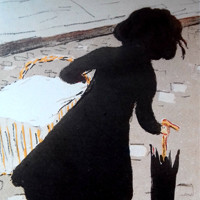 | Irena Jasionek Simply a miracle, is breathtaking. |
 | Rob Darby PRO Inspiring interview supported by the amazing images in Mr. Kordan’s portfolio. He sets the bar very high. |
 | Marius Cinteza CREW Thank you, Rob!! |
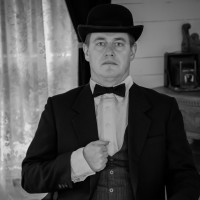 | Miroslaw Prybinski PRO Lovely fairy-tale shots. Congratulations. |
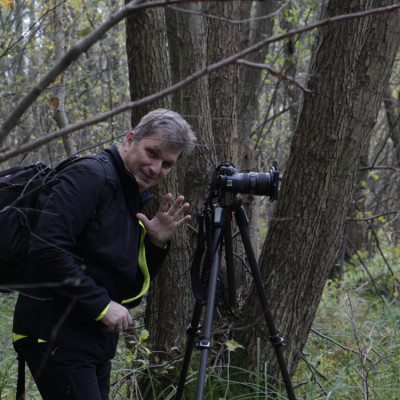 | Slawomir Kowalczyk AFRP IAAP CREW Great article. A well-described path to fantastic photos and recognition, which is not easy these days. Congratulations and I wish you continued success! |
 | Marius Cinteza CREW Many thanks, Slawomir!! |
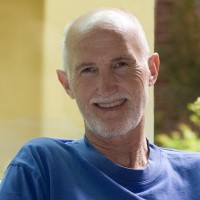 | Wayne Pearson PRO Thank you very much Daniel and Yvette for your informative and very interesting story and interview, and of course your incredible landscapes Daniel. |
 | Yvette Depaepe CREW Thanks Wayne ;-) |
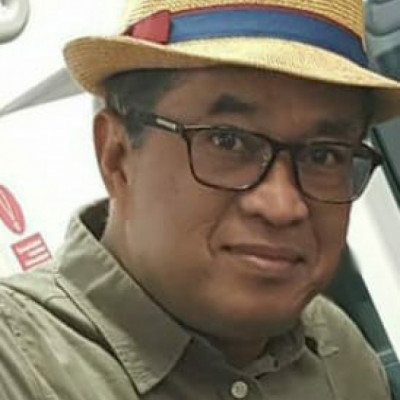 | hedianto.hs nice interview and story, great pictures 😊 |
 | Marius Cinteza CREW Thank you!! |